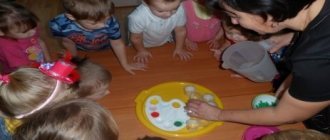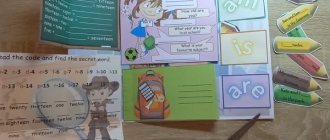Everything goes according to plan: 20 great planning ideas for children and adults
The topic of daily planning has always been relevant and interesting to me. I recently found various tools online for similar purposes that will be convenient to use. You can also make them yourself or together with your kids, and turn everyday duties and routine into an exciting game or even a competition. I want to share with you the most interesting specimens. I mainly took planning options for children, but many of the ideas will appeal to adults too!
To-do list for the baby - as tasks are completed, the pictures need to be closed with a magnetic flap:
This felt list has a task inside each scoop of ice cream. Sometimes, may my parents forgive me, you can change their order. 
The same idea, but with magnets, is suitable for a refrigerator or a board in a nursery:
Another option for the little ones - the child fills out a plan of daily activities for the week with stickers:
For those who are older and can read: the printed sheet is placed in a frame and the tasks are marked with a washable whiteboard marker:
The same option, but for the whole week:
I really like the two-part “To Do -> Done” options. For kids - with pictures:
Here the tasks are divided into morning and evening:
For older people, the option with clothespins is suitable:
Here are reminders of what you need to do in the mornings and evenings. And always at hand (with a pen)
Mandatory tasks for every day and for the whole week: completed the task - moved the tube. You can make the same option with beads, the color of which will indicate the degree of importance of the matter:
Duty planner for all family members with hanging cards. You can write detailed instructions on the cards:
But here is an excellent option for a sticker board, this one will definitely come in handy not only at home, but also in the office. You can happily destroy the leaves upon completion of the task!
For teenagers, encouragement is a good motivation to do serious things around the house. Money can be replaced with cards with permission to do something, for example, +20 minutes outside with friends, extra ice cream, one ride on the carousel, an episode of your favorite cartoon, ten minutes of talking with a friend on the phone:
Very clear distribution of time. Such a tool will save everyone from asking “Well, can I just have a minute?!” 
When it comes to cleaning a house, you definitely need to have an open mind. A randomizer will help you with this. It can easily be applied to other tasks around the house. Everyone participates!
This option is for those who have a lot of things to do and find it difficult to choose where to start. Pull the ball and go!
A great idea is to dedicate one wall to a shared planner for the whole family:
I hope you not only like these options, but also find them useful. Proper management of time is also creativity!
Inspiration to you. Thank you for your attention!
How and when to teach a child planning and what does project management have to do with it?
Painting by Salvador Dali “The Persistence of Memory”
Modern children have very busy everyday life: school, clubs, sports, homework, hobbies. At the same time, parents are usually responsible for planning: they draw up a daily schedule, pack a backpack, make sure that they do their homework and don’t forget their uniform. Our blogger Maryam Tsarenok tells how to delegate all these tasks to a child.
Useful Mela newsletter twice a week: Tuesday and Friday
SUBSCRIBE
Planning for children is one of those things that mom needs first. In this article, I propose to look at this process from the point of view of project management - with all its inherent attributes and properties.
First, let's look at how planning happens on projects, and then we'll try to transfer the information received to the child's everyday life. Planning within project management consists of several key stages: identifying tasks and their decomposition, risk management, estimating the timing of each task, drawing up a schedule, estimating the cost of completing each task, calculating the project budget. (However, today we will not touch on the budget - for the purposes of this article, this point is not yet relevant.)
Good decomposition requires knowledge in the field to which the task relates and experience in performing this and/or a similar task. Roughly speaking, this is the answer to the question “What steps do I need to complete to solve this problem?” The more detailed the decomposition, the greater the chances of an accurate estimate of time and cost.
Risk management is the process of identifying possible risks that may affect a project. If for the decomposition stage sometimes only knowledge is enough, then estimating deadlines requires experience. Only if we have experience in performing this or a similar task will we be able to answer the question “how long will it take?”
Well, here's a simple example: cooking an omelet. The recipe says total cooking time for a five-egg omelette is 15 minutes. Is this knowledge enough for us to estimate how long WE will take to cook an omelette? Yes and no. On the one hand, this is the number of minutes that the average user of this recipe spends on average. But let’s say you’re used to washing eggs immediately before cooking. And you also eat an omelette without the yolks - you need to remove them and figure out where to put them away. For example, I have a rare case when I break eggs so that I don’t have to fish the shells out of the cup later. I also want to wash the cup in which the eggs were beaten right away. And the frying pan is such that the bottom of the omelet constantly burns - you have to stand right there and watch (at this moment you can’t cut the greens for the omelet, or put the dishes on the table). I hope I was able to explain why it is virtually impossible to make a quality assessment without experience.
Planning is the basis for the initiative of preschool children
Marina Pinchugova
Planning is the basis for the initiative of preschool children
“In Russian preschool educational practice, a situation has developed that dictates the plan : the plan is written by educators and executed as a mandatory document, regardless of the current situation. This happens, among other things, because educators are not accustomed to using information received from children . In psychology, the process of receiving information from a communication partner is called “feedback.”
, and only interaction built on
the basis of “feedback”
can be considered adequate.
Educators ignore feedback from the child, especially during the planning . Thus, the problem of contradiction between planning and situational response, improvisation, planning and the real interests and needs of children .
A child’s learning occurs not only and not so much in formal classes, but in active activities chosen by him, especially in collaboration with peers and adults. In addition, by proposing a topic, the child learns to defend his interests. By accepting the topic proposed by others, he learns to reconcile his interests with the interests of other children . By offering ways of knowing, activities teach initiative and independence. By choosing from what is offered, he learns to analyze.” [3]
Thus. An adult must be able to change educational activities so that they facilitate the search for answers to children's questions, be flexible in relation to plans and the organization of specific activities.
In search of a solution to this contradiction, I decided to include children in activity planning . Assuming that joint planning will support children's initiative by working with their interests.
On the eve of choosing a new topic, in free communication with children, I talk about what they know about this topic; what they want to know; what should be done. To find out (using the Three Question Model)
).
This is an effective means of preparing and motivating children for upcoming activities; it allows children to talk about what interests, worries and occupies them. Often, students involve their parents in the upcoming work, thereby involving them in joint activities. (Annex 1)
.
This is how I get primary information about the children’s , which helps to select the possible forms and content of the upcoming work. Since this information is placed in the parent's corner, parents determine what interests the child at the moment.
Then, more often when holding a group meeting, I discuss with the children the variety of activities that can and should be done within the framework of the topic. Afterwards, the guys determine the center (the corner that is most suitable for this type of work, and choose the person responsible for the implementation of the plan.
In order not to forget what was planned , children sketch ideas that are to be translated into a pre-prepared table. To do this, they increasingly use symbols and icons, consulting with their comrades, which of them will be understood by others. At this stage, the teacher can offer his ideas along with the students. I often write down my ideas in block letters. (Appendix 2)
.
Studying the completed tables provides abundant analytical material: how proactive is this or that child, whose initiative predominates - children or adults , what types of activities are most often offered, which centers are the least popular, which causes difficulties. This allows you to reflect on the life of the group.
The completed plan is posted on the board. During the implementation of joint planning , my task with my parents is to complement the children’s , to help select a variety of materials for their implementation: toys, games, books, tasks focused on varying degrees of complexity and interests of the students.
It is very important not to leave everything to chance in carrying out the plan , not to expect that the children will do everything without help. It is necessary to notice the indecisiveness of children when implementing ideas , to pay attention to complex tasks that the child may not be able to cope with on his own. Intervention in children’s can be a simple reminder of what is planned , or additional clarification. If you have the greatest difficulties in the “show”
or
“teach”
me this activity.
Another reason for intervention may be a conflict that cannot be resolved by the children themselves.
At the final group meeting, the results of activities are reviewed, achievements, successes and difficulties are analyzed. At this stage, I invite everyone to tell us about their plans and the work completed, what hindered and helped, what they plan to finish , how they can use the work, and more.
Thus, the proactive behavior of children is manifested , first of all, in the fact that they plan their actions , set tasks for themselves and consistently solve them. Preschoolers learn to initiate interesting things within the framework of a specific topic, make decisions, work with different sources of information, independently analyze the results obtained, find common interests with peers, developing communication skills.
This type of joint activity with children can be used, starting from middle groups in any preschool organizations, not only in work on thematic planning , but also when organizing project activities.
LITERATURE.
1. Svirskaya L.V. “Morning of joyful meetings”
. Toolkit. – M.: Linka – Press, 2010 – 120 p.
2. Svirskaya L.V. “Children’s Council”
. Methodological recommendations for teachers. – M.: National Education, 2015 – 80 p.
3. Svirskaya L.V. Dear little-equipped // Kindergarten from all sides - St. Petersburg: - 2002.






